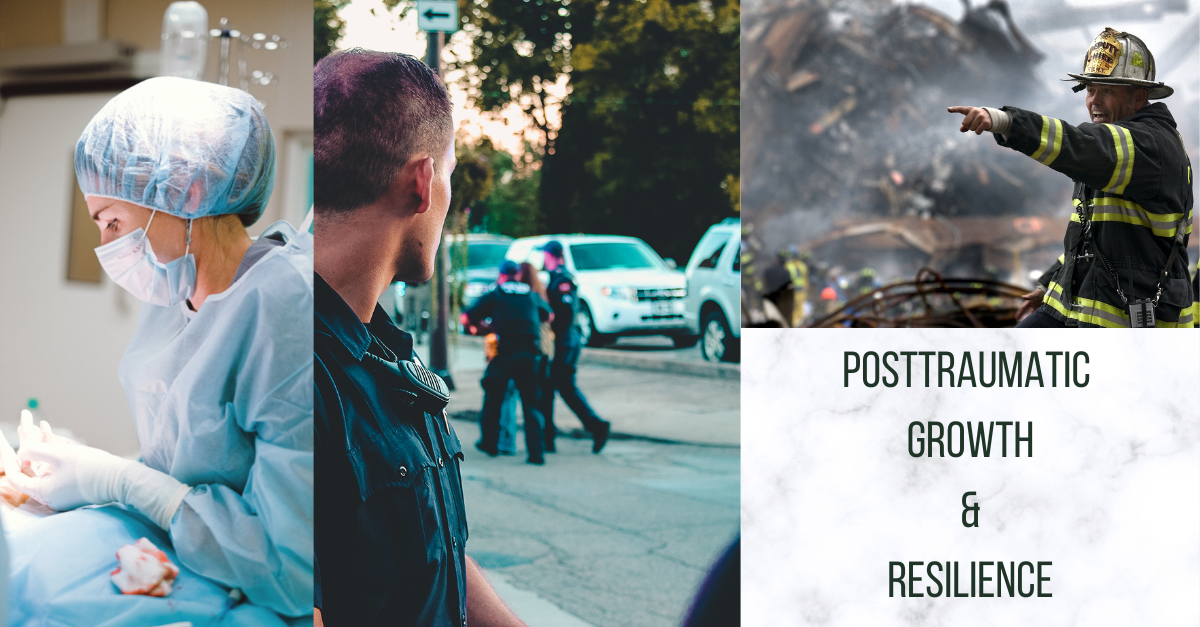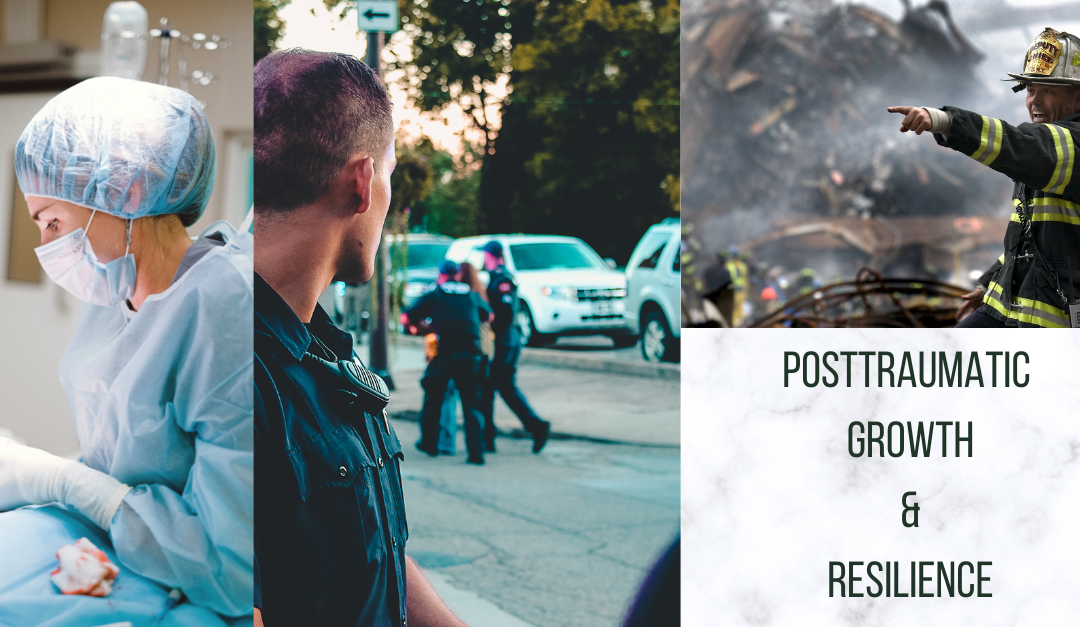
The occupational hazards of working as a first responder are well documented and often linked to first responders experiencing consistent exposure to traumatic events and critical incidents as a part of their occupational responsibilities. Adverse reactions following one or more direct exposures to a traumatic event has been linked to posttraumatic stress disorder (PTSD) and other mental health disorders. Although many researchers in the past have explored risk factors and incidence of posttraumatic stress injuries in emergency responders, recent positive psychology based studies have focused on resilience and the roles of social support, self efficacy a sense of coherence, and the resource availability that fosters posttraumatic growth yielding what some may call an uncommon resilience.
Posttraumatic Growth (PTG) is positive change experienced as a result of the struggle with a major life crisis or a traumatic event. Although not a new concept, the theme of overcoming and recovering after tragedy, trauma, and pain are present in spiritual and religious traditions, literature, and philosophy. What is burgeoning is how the study and the application of strategies that lead PTG in people, and especially first responders.
The COVID-19 pandemic has caused many first responders across the world to face insurmountable death tolls, trauma, fear, inconsistent information and shortages of supplies, family issues and more.The five domains that tend to emerge when PTG occurs is sensing new opportunities have emerged from the struggle, creating options and possibilities that were not present before. A second domain is that a greater appreciation for relationships with others may emerge. Some people experience closer relationships with some specific people, and they can also experience an increased sense of connection to others who suffer. A third area of possible change is an increased sense of one’s own strength – “if I lived through that, I can face anything”. A fourth aspect of posttraumatic growth experienced by some people is a greater appreciation for life in general. The fifth area may involve spiritual growth possibly creating a shift in one’s belief system and/ or a desire to deepen their spiritual or faith walk through education, practice and expression. It is normal to have psychological reactions to abnormal or highly distressing events, difficult losses or experiencing your own or others suffering. It is important to recognize that as a human being suffering and growth can co-exist.Just because a first responder is resilient or experiences growth following an event does not mean that they will not suffer. Distress is typical when we face traumatic events, the body and brain’s natural reset period is about 2-4 weeks following a traumatic event. That means that even if you did not seek support, your body and brain are self-healing and will adapt. Intervention can help reduce the cumulative effects of trauma and we recommend EMDR, CPT, and Prolonged Exposure Therapy if you decide support is needed.
As first responders, you see others experience life crises first hand and are fully aware that crises are inevitable. We are not given the choice between suffering and growth, it in some circumstances just happens.
Posttraumatic growth is not universal and it also is not uncommon. We believe that PTG plays an important part of resiliency. By activating and maintaining a wellness and resiliency plan, reaching PTG may be more likely.

